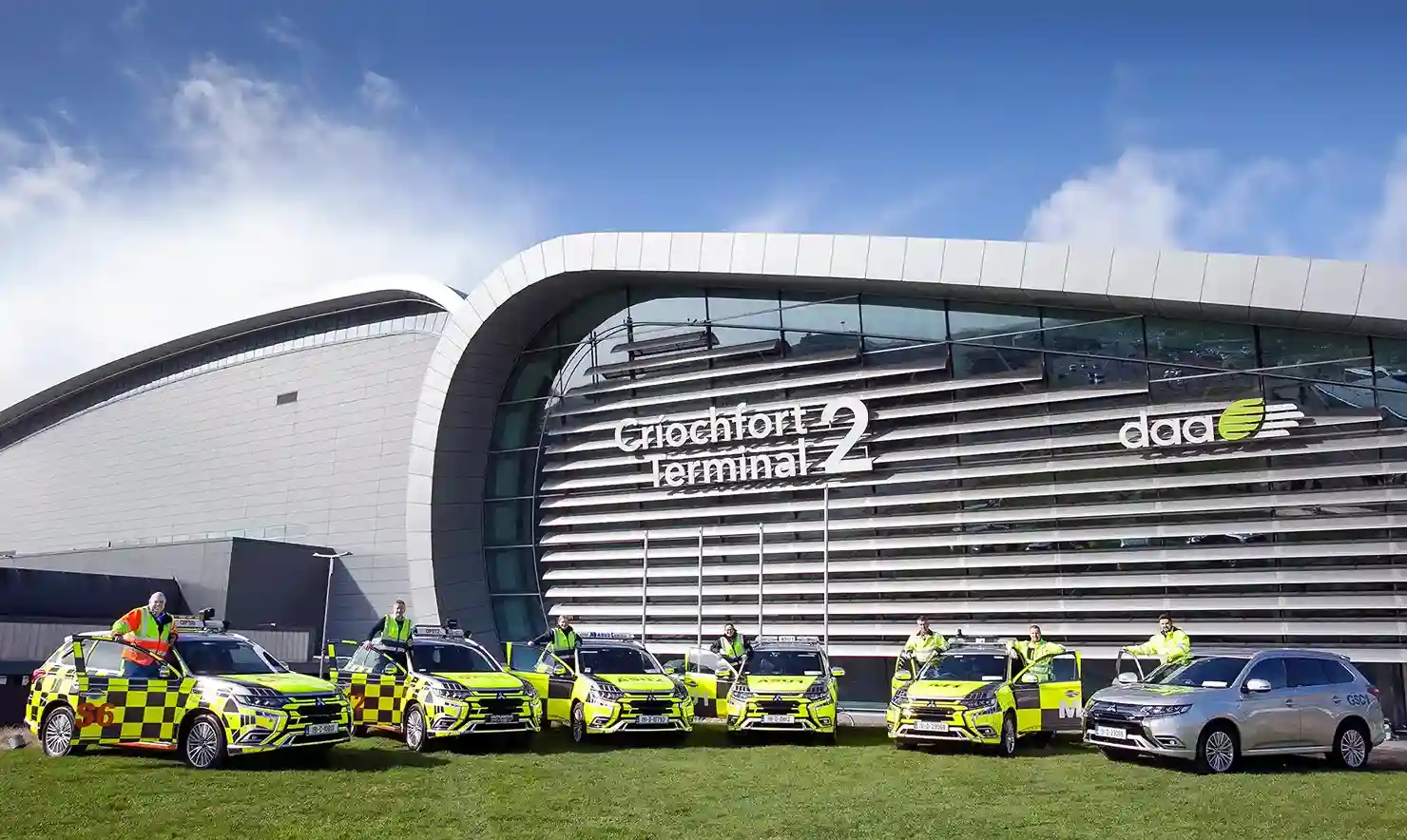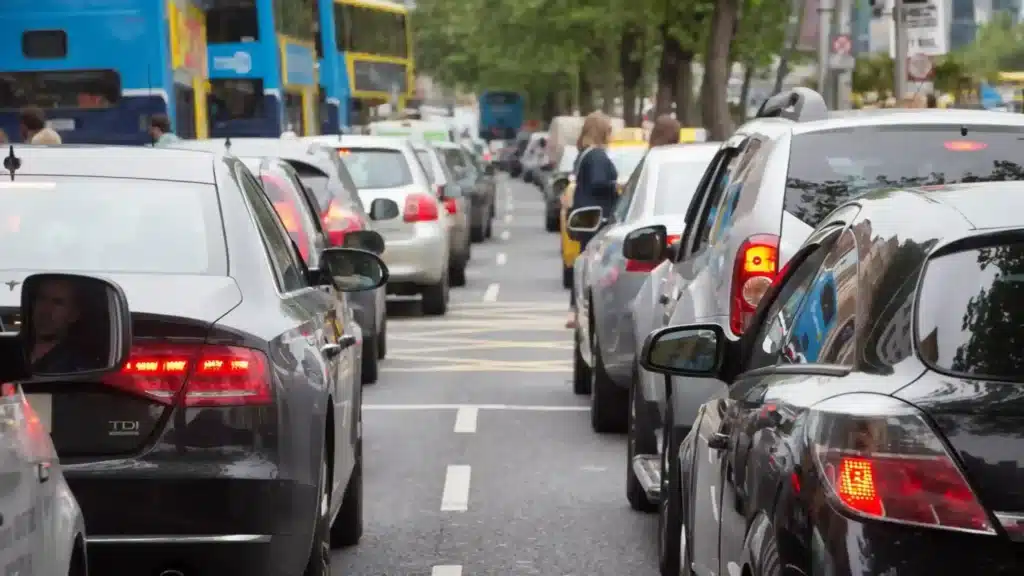Dublin Airport CO2 Emissions Match 1.4M Cars Annually

A recent report by the global affairs think tank ODI has revealed some startling facts about the environmental impact of airports. According to the report, Dublin Airport CO2 emissions are at 2.8 million tonnes of CO2 annually, equivalent to the emissions of 1.4 million cars. This places it among the top polluters globally, highlighting the urgent need for the aviation industry to address its significant carbon footprint.
(Also read Irish Govt Commits to €600m For Derry to Donegal Road Upgrade.)
Implications of Dublin Airport CO2 emissions for the citizens
The report further emphasises the health risks associated with airport emissions. Dublin Airport CO2 emissions include significant amounts of nitrogen oxides (NOx) and PM2.5, linked to respiratory problems and other health issues. These emissions are equivalent to the yearly output of 520,000 cars, posing a significant threat to the health of local communities.

While Dublin Airport CO2 emissions are concerning, they are not an isolated case. The report identifies 20 airports worldwide responsible for generating a combined CO2 output equivalent to 58 coal plants.
The following is a list of airports, along with their corresponding CO2 emissions in metric tons (MtCO2) and the percentage of passengers and freight they handle:
- Amsterdam Schiphol generates 11 MtCO2, handling 76% passengers and 24% freight.
- Atlanta Hartsfield-Jackson generates 10 MtCO2, handling 90% passengers and 10% freight.
- Bangkok Suvarnabhumi generates 10 MtCO2, handling 83% passengers and 17% freight.
- Beijing Capital generates 13 MtCO2, handling 87% of passengers and 13% of freight.
- Chicago O’Hare generates 11 MtCO2, handling 79% passengers and 21% freight.
- Doha Hamad generates 11 MtCO2, handling 73% passengers and 27% freight.
- Dubai generates 20 MtCO2 and handles 83% of passengers and 17% of freight.
- Frankfurt generates 14 MtCO2 and handles 76% passengers and 14% freight.
- Hong Kong generates 17 MtCO2, handling 65% of passengers and 35% of freight.
- Istanbul generates 8 MtCO2 and handles 85% of passengers and 15% of freight.
- John F. Kennedy New York generates 15 MtCO2, handling 88% passengers and 12% freight.
- London Heathrow generates 19 MtCO2, handling 85% passengers and 15% freight.
- Los Angeles generates 19 MtCO2 and handles 82% of passengers and 18% of freight.
- Paris Charles de Gaulle generates 14 MtCO2, handling 81% passengers and 19% freight.
- San Francisco generates 11 MtCO2, handling 90% of passengers and 10% of freight.
- Seoul Incheon generates 14 MtCO2, handling 72% passengers and 28% freight.
- Shanghai Pudong generates 14 MtCO2, handling 67% passengers and 33% freight.
- Singapore Changi generates 14 MtCO2, handling 80% of passengers and 20% of freight.
- Sydney Kingsford Smith generates 9 MtCO2, handling 82% passengers and 18% freight.
- Tokyo Narita generates 11 MtCO2 and handles 72% of passengers and 28% of freight.
This stark comparison underscores the immense environmental impact of the aviation industry and the need for systemic change.
While the industry touts sustainable aviation fuels (SAFs) as a solution, the report casts doubt on their immediate effectiveness. Currently, SAFs account for a mere 0.1% of jet fuel consumption, and reaching the necessary production levels for significant decarbonization by 2050 seems highly improbable.
Furthermore, the predicted increase in air travel is expected to offset any efficiency improvements from technology advancements.
Experts warn that even expected efficiency gains from technological advancements will likely be outweighed by the projected surge in air travel as the industry recovers from the pandemic. This raises serious concerns about the industry’s ability to meet its climate goals, particularly considering the slow adoption of clean technologies and the exponential growth trajectory of the sector.
The report’s findings have been met with alarm by environmental groups. Stay Grounded’s Magdalena Heuwieser highlights the urgent need for action to safeguard the health of the communities near airports. Stay Grounded is a network that advocates for lower aviation traffic. She calls for measures like night flight bans, stricter fuel standards, and a reduction in overall flight numbers to mitigate the industry’s negative impacts.
Shandelle Steadman of ODI highlights the critical need for transparent reporting of airport emissions and comprehensive strategies to address localised pollution at the airport level. Jo Dardenne of Transport & Environment echoes these concerns, urging policymakers to address the growing problem of airport pollution and its detrimental effects on public health and the environment.
Policymakers and the aviation sector both find the report to be eye-opening. Urgent action is needed to curb airport emissions, protect public health, and achieve meaningful progress towards decarbonization. Implementing stricter regulations, exploring alternative fuels, and promoting sustainable travel practices are crucial to ensuring a greener future for air travel.
LATEST NEWS
DISCOVER MORE






